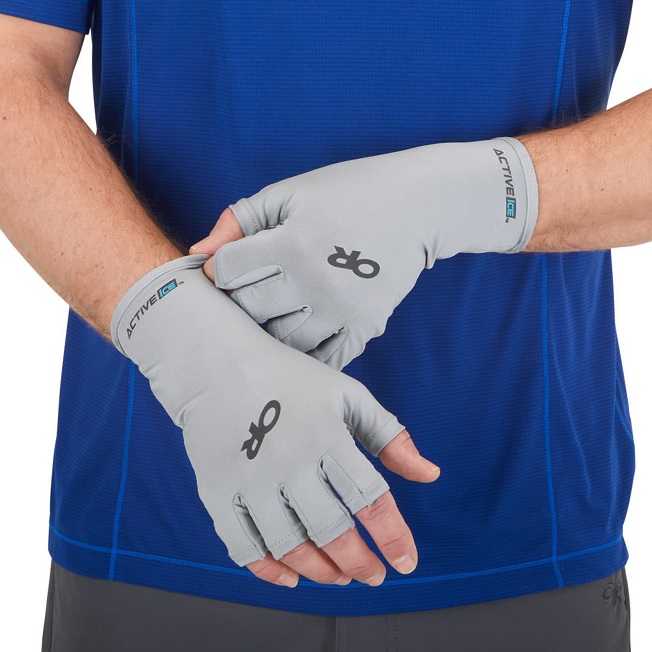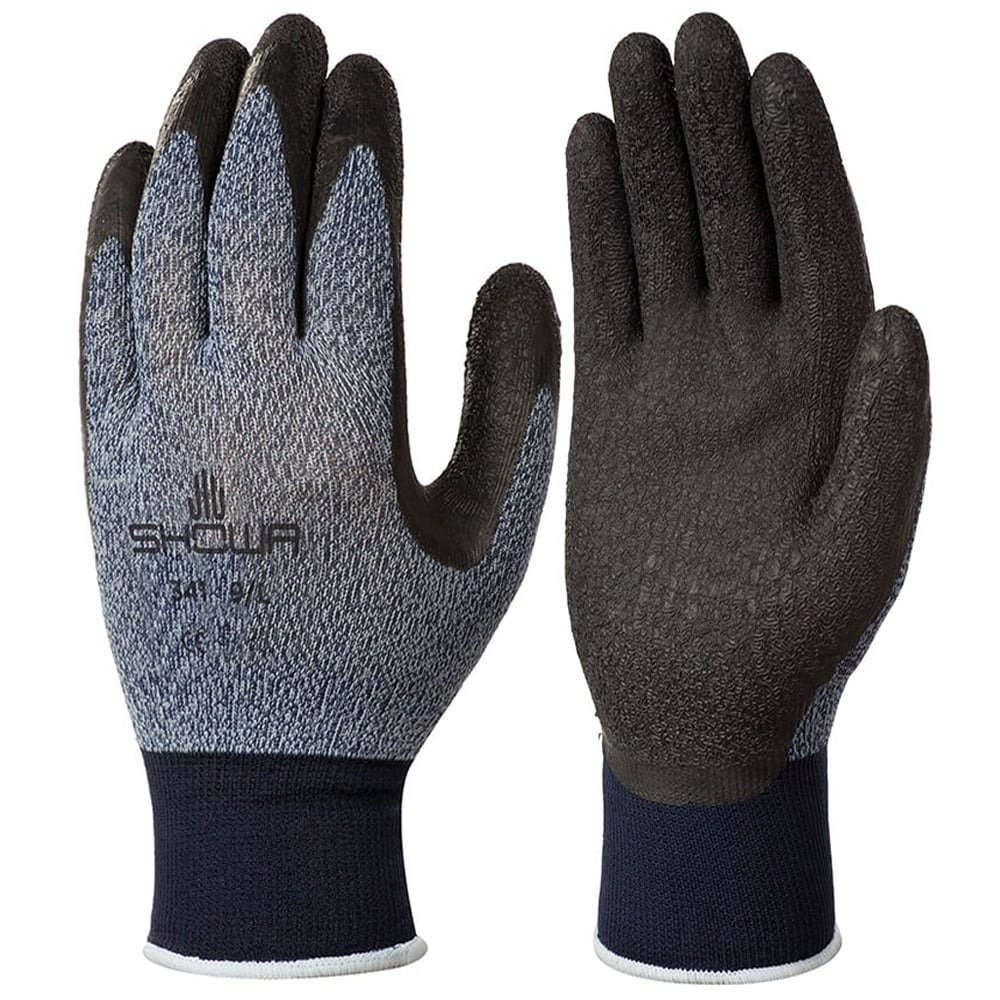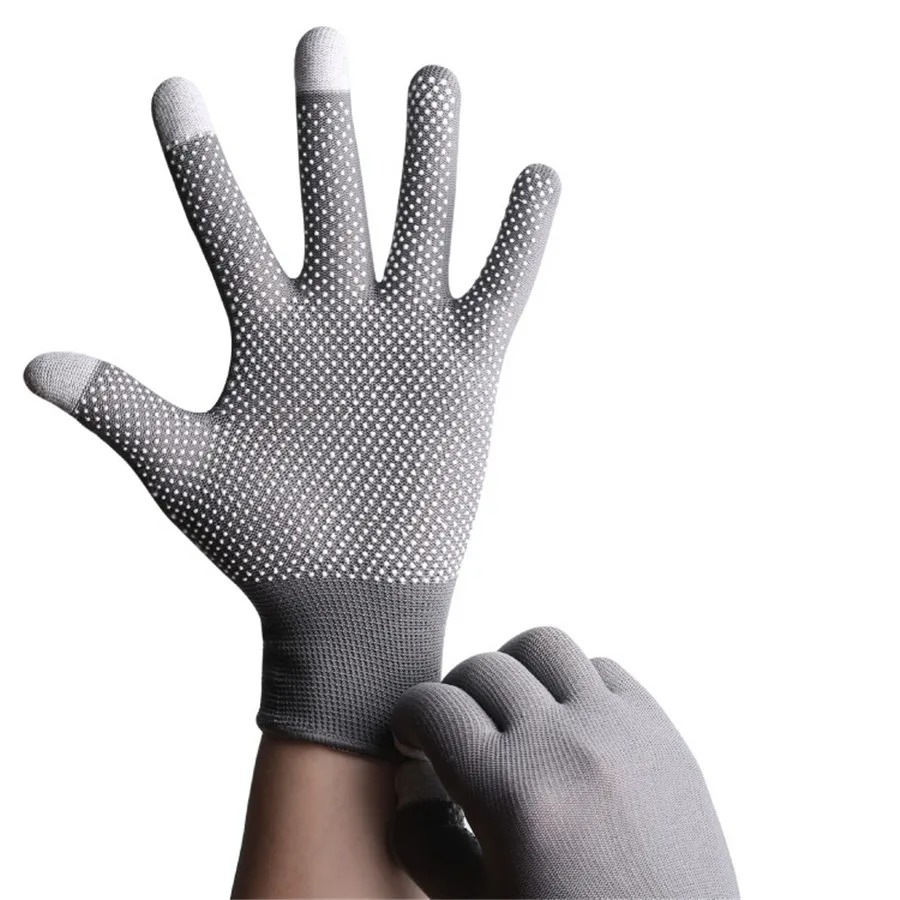What Are Breathable Gloves?
Breathable gloves are a functional innovation in handwear. They allow air passage to prevent excessive sweating. This type of glove uses materials and design features that enable your hands to stay dry and comfortable, even during intense activities or in warm conditions. The concept of ‘breathability’ means that moisture from the skin can escape, while outside air circulates in the glove. This dual-action functionality maintains temperature regulation and reduces moisture build-up.
Breathable gloves come in various forms to suit different needs. They range from thin liners for a mild climate to insulated options for cooler environments. Many of them also sport features such as moisture-wicking fabrics and mesh panels. These enhance air flow and manage perspiration effectively.
People choose breathable gloves for a host of activities. These include sports, work, and everyday outdoor use. They are a true testament to modern fabric technology and ergonomic design. With breathable gloves, users experience less irritation and more comfort, which is essential for both performance and enjoyment.

The Importance of Breathability in Gloves
Breathable gloves are not just a comfort feature—they are a necessity for maintaining hand health and performance in various conditions. The ability to wick away moisture from the skin is critical. Without this, hands can become damp, leading to discomfort, slippage, and even blisters. In prolonged scenarios, non-breathable gloves can also cause skin irritations and infections due to the moist environment.
Breathability in gloves is essential for temperature control. It helps keep hands cool in warm weather and avoids overheating. In cooler temperatures, breathable gloves still play a crucial role. They prevent sweat build-up which can later lead to chilling when the moisture evaporates, dropping body temperature. Thus, gloves that offer air circulation help to regulate temperature effectively in diverse weather conditions.
For those engaged in physical work or sports, breathable gloves offer another advantage—the enhancement of grip and dexterity. When hands are dry and comfortable, the ability to perform tasks with precision boosts significantly. This can make a vital difference in both safety and performance. For instance, in jobs that require handling delicate or hazardous materials, a reliable grip is indispensable. Similarly, in sports, where hand control is crucial, breathable gloves support the athlete by ensuring that moisture does not compromise their grip.
Therefore, it’s clear that the function of breathable gloves extends beyond comfort. They contribute to overall hand care, performance, and even safety. When choosing gloves, considering breathability is as important as thinking about fit and protection, making breathable gloves a wise choice for almost any application.
Types of Breathable Gloves
Exploring the different types of breathable gloves helps in picking the right pair for your needs. Each type caters to different activities and environments. Let’s dive into the varieties available.
Athletic and Sports Gloves
Sports enthusiasts often use athletic gloves designed for breathability. These gloves ensure hands stay dry, improving grip and control during sports. They’re ideal for cyclists, weightlifters, and runners who need ventilation and moisture control.
Work and Safety Gloves
Workers also benefit from breathable gloves, especially in jobs demanding precision and safety. These gloves combine breathability with protection, reducing slippage and enhancing grip for handling tools and materials.
Outdoor and Cold Weather Gloves
For outdoor adventurers, cold weather doesn’t mean disregarding breathability. Outdoor gloves designed for cooler climates still offer air circulation. They keep hands warm without causing them to sweat, which is critical in preventing chill.

Materials Used in Breathable Gloves
The performance of breathable gloves largely hinges on the materials they’re made of. These materials must balance durability, comfort, and breathability to serve their purpose effectively. Below, we’ll discuss the two primary categories of fabrics used in these gloves.
Natural Fabrics
Natural fabrics are a common choice for breathable gloves due to their inherent ventilative properties. Here are a few natural materials you’ll find:
- Cotton: A soft and natural fiber known for its breathability and moisture absorption. Common in lightweight gloves.
- Leather: Offers durability along with a degree of breathability. Ideal for work gloves where resilience is key.
- Bamboo: A rapidly renewable resource that provides excellent moisture wicking and is exceptionally soft against the skin.
Natural fabrics not only offer breathability but also tend to be more eco-friendly, which appeals to environmentally conscious consumers.
Synthetic Fabrics
Synthetic fabrics, on the other hand, are engineered for performance and often integrate breathability-enhancing technology. Such materials include:
- Polyester: Highly durable and dries quickly, often blended with other fabrics to improve breathability.
- Nylon: Hardy and stretchable, with the ability to wick moisture away rapidly.
- Spandex: Adds elasticity to gloves, allowing for a snug fit that enhances dexterity without sacrificing airflow.
Manufacturers frequently use a mix of natural and synthetic materials to craft gloves that meet specific needs. For example, a blend of cotton and polyester can create a more breathable and quick-drying fabric, suitable for both sports and work gloves.
Through the skilled use of both natural and synthetic fabrics, brands can produce breathable gloves that cater to a vast range of uses and preferences. When searching for the right pair, always consider the materials to ensure they align with your activity’s demands and your personal comfort needs.

Key Features to Look For in Breathable Gloves
When selecting the perfect pair of breathable gloves, there are several key features you should consider. These features not only enhance the glove’s basic function but also contribute significantly to your comfort and performance during use. Look for these must-have features in your next pair of gloves to ensure they meet the highest standards of breathability and efficiency.
Moisture-Wicking Properties
One of the essential characteristics of high-quality breathable gloves is moisture-wicking properties. These properties ensure that sweat is drawn away from the skin, keeping your hands dry even during intense activities. A good pair of breathable gloves typically has an inner lining that absorbs moisture effectively.
Grip Enhancement
Don’t underestimate the importance of grip. Breathable gloves should provide a firm hold, whether you’re lifting weights or holding onto a shovel. Look for gloves with textured surfaces or special coatings designed to offer better grip while maintaining breathability.
Fit and Flexibility
Finally, fit and flexibility are crucial for your comfort and dexterity. Gloves should fit snugly without restricting movement. A proper fit prevents bunching and ensures ease of movement, while flexibility allows for a full range of hand motions. Fabrics like spandex are often integrated into breathable gloves to achieve this balance.
Top Brands Offering Breathable Gloves
When searching for quality breathable gloves, selecting a reliable brand is crucial. Top brands focus on creating gloves that balance protection, comfort, and breathability. These brands stand out by offering innovative designs and cutting-edge materials. Here are some renowned brands known for their high-performance gloves:
- Under Armour: Famous for sports gear, Under Armour’s gloves provide excellent moisture-wicking and breathability for athletes.
- Mechanix Wear: Trusted in the industry, their work gloves offer superior grip and durability while allowing air flow to keep hands cool.
- Columbia Sportswear: Known for outdoor apparel, Columbia offers gloves that are warm yet breathable, suitable for colder climates.
- Nike: Nike’s athletic gloves feature advanced fabrics that manage sweat and enhance grip for a variety of sports activities.
- Carhartt: Ideal for heavy-duty tasks, Carhartt gloves are built tough with breathable materials for all-day comfort.
- The North Face: Catering to outdoor enthusiasts, their gloves are designed to regulate temperature while being lightweight and breathable.
These brands have built reputations on quality and innovation. They understand the importance of breathability in gloves and employ technologies to ensure your hands remain dry and comfortable, regardless of the conditions. When looking for breathable gloves, consider these brands for their commitment to functionality and design excellence.
Care and Maintenance of Breathable Gloves
Proper care is vital for your gloves to last longer and perform better. Here’s how to keep them in top condition.
Washing and Drying
To wash your gloves, always follow the label instructions. Use cool water and a mild detergent. Handwash gently, do not wring. For machine wash, select a gentle cycle. Avoid fabric softeners, as they can clog the fabric pores. Air dry gloves by laying them flat or hang them up. Keep them out of direct sunlight and away from heaters. Never use a tumble dryer unless the label says it’s safe.
Storage Solutions
Store your gloves in a cool, dry place. Make sure they’re fully dry before storing. Keep them flat or rolled to prevent creasing. Use a breathable storage bag if available. Avoid plastic bags or airtight containers. This can lock in moisture and lead to mildew.
How to Choose the Right Gloves for Your Needs
Choosing the right breathable gloves involves more than picking a pair off the shelf. You need to consider the specific activities you’ll be engaging in and the conditions you’ll face. Here’s what to keep in mind:
- Identify Your Activity: Will you be using the gloves for sports, work, or casual outdoor activities? Athletic gloves differ from those designed for work safety in materials and features.
- Consider the Environment: Think about the weather conditions. If you’re often outdoors in cold weather, look for gloves with insulation yet still breathable to prevent sweating.
- Check the Materials: Review the glove’s materials. Natural fabrics like cotton offer comfort for mild climates, while synthetics like polyester might be better for wet conditions.
- Examine the Features: Look for moisture-wicking properties to keep hands dry. Ensure the gloves have a good grip, especially if precision is important in your activities. The fit should be snug but not restrictive, allowing full hand movements.
- Read Reviews and Recommendations: Learn from others who have used the gloves. Good reviews can point you towards the best choice for your needs.
- Test Them Out: If possible, try on several pairs. This helps you feel the fit and flexibility and test the grip.
By considering these factors, you’ll find a pair of breathable gloves that fits your needs and enhances your performance in any activity.
